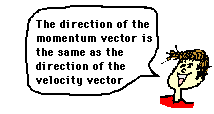Start here for animation on Coastal Changes
We are now experimenting on how human interaction can affect natural coastal changes

Several engineering solutions are used for coastal protection and beach restoration. In the past, construction of hard structures, hard solutions such as groins and sea walls, jettys and breakwaters have been used with varying degrees of success. Some solutions have been successful, some require expensive ongoing maintenance and others have caused even more problems. Another method of coastal protection is to artificially nourish the beaches by transporting sand from another location to restore a beach. Once again, this method has varying levels of success.

Students are attempting to answer "Hard Solution" questions regarding beach and coastal erosion. They "wonder" WHAT and HOW "hard solutions" to beach erosion are supposed to work.



Developing testable predictions ...... defining independent and dependent variables...
Then DV
Students developed a myriad of possible solutions...

If you increase the resistance to beach swash, then the landward beach erosion will......
 (hmmmmmmm?... increase? ...decrease?... stay the same?)
(hmmmmmmm?... increase? ...decrease?... stay the same?) Groins and Longshore Drift
Groins, usually made of timber, rock or concrete, are built perpendicular to a beach and into the water to trap sand. On beaches where waves arrive at right angles to the shore, a series of groins can trap sand, creating a series of small beaches




On beaches where waves arrive at an angle to the shore and the beach is affected by longshore drifting, a different situation arises. As the water and sand move by, the first groin will trap sand meanwhile starving the beach of sand (and other groin) further along the shore. Groins can be designed to allow some sand to spill around the structure and minimize downstream erosion.

Groins are not successful in all circumstances contributing to further erosion. A careful analysis of wave approach and currents should precede any decision to install a groin, and the structures should be carefully designed for the specific location.
Seawalls


Seawalls may be constructed of timber, rock, steel or concrete and are placed at the back of a beach. Although seawalls can protect the land directly behind, they can also accelerate erosion at the end of the wall and/or cause erosion of the beach in front of the seawall. When waves hit the wall and retreat, the wave
 action scours sand from the beach back into the water. Ultimately, the beach becomes lower and flatter, creating a condition where waves become larger, which increases the scouring action and the beach is eventually lost.
action scours sand from the beach back into the water. Ultimately, the beach becomes lower and flatter, creating a condition where waves become larger, which increases the scouring action and the beach is eventually lost. Artificial beach nourishment (replenishment) is the depositing of sand from elsewhere to replenish eroded beaches. Sand may be trucked in or dredged and pumped from offshore. But it is not as easy as it sounds. The nourishing sand must be as coarse as the sand that is currently on the beach. If the nourishing sand is of a finer grain, the sand will be easily swept away by normal wave action. On beaches where sand has been lost through longshore drifting it is likely that nourishing sand will also be lost. Sometimes in this scenario, groins are constructed to trap drifting sand.
Artificial beach nourishment (replenishment) is the depositing of sand from elsewhere to replenish eroded beaches. Sand may be trucked in or dredged and pumped from offshore. But it is not as easy as it sounds. The nourishing sand must be as coarse as the sand that is currently on the beach. If the nourishing sand is of a finer grain, the sand will be easily swept away by normal wave action. On beaches where sand has been lost through longshore drifting it is likely that nourishing sand will also be lost. Sometimes in this scenario, groins are constructed to trap drifting sand.It is important to remember that coastal erosion is a natural process and does not always have a negative outcome. It is the natural erosion process which gets sand on beaches in the first place, but if interference occurs with natural erosion and deposition patterns, undesired outcomes requiring further action can occur.
So what is the solution? Or has nature found its own solutions and we have just ignored them?
What do you think?

 must include information about both the magnitude and the direction of the bowling ball. It is not enough to say that the ball has 10 kg•m/s of momentum; the momentum of the ball is not fully described until information about its direction is given. The direction of the momentum vector is the same as the direction of the velocity of the ball. In a previous unit, it was said that
must include information about both the magnitude and the direction of the bowling ball. It is not enough to say that the ball has 10 kg•m/s of momentum; the momentum of the ball is not fully described until information about its direction is given. The direction of the momentum vector is the same as the direction of the velocity of the ball. In a previous unit, it was said that 



